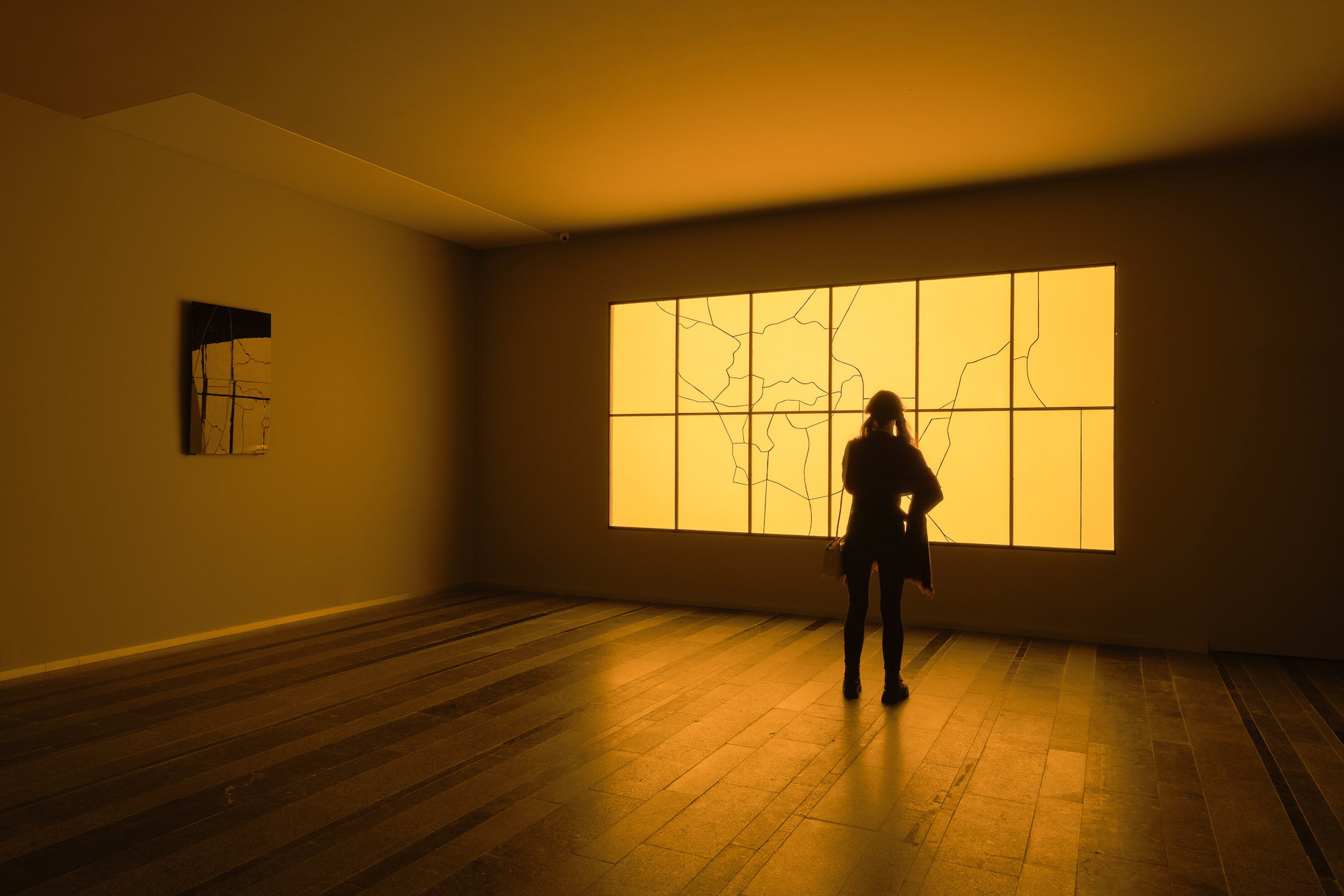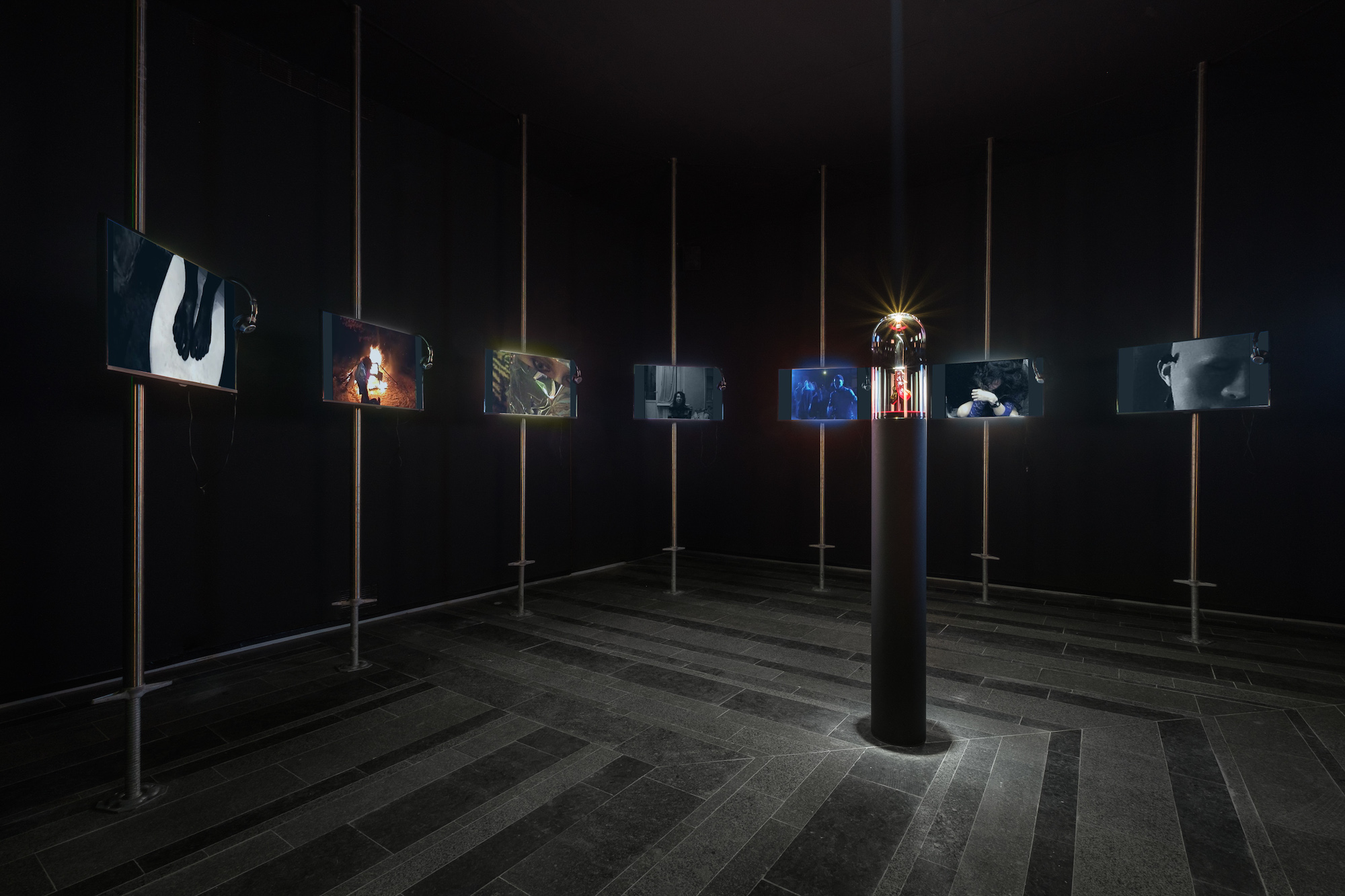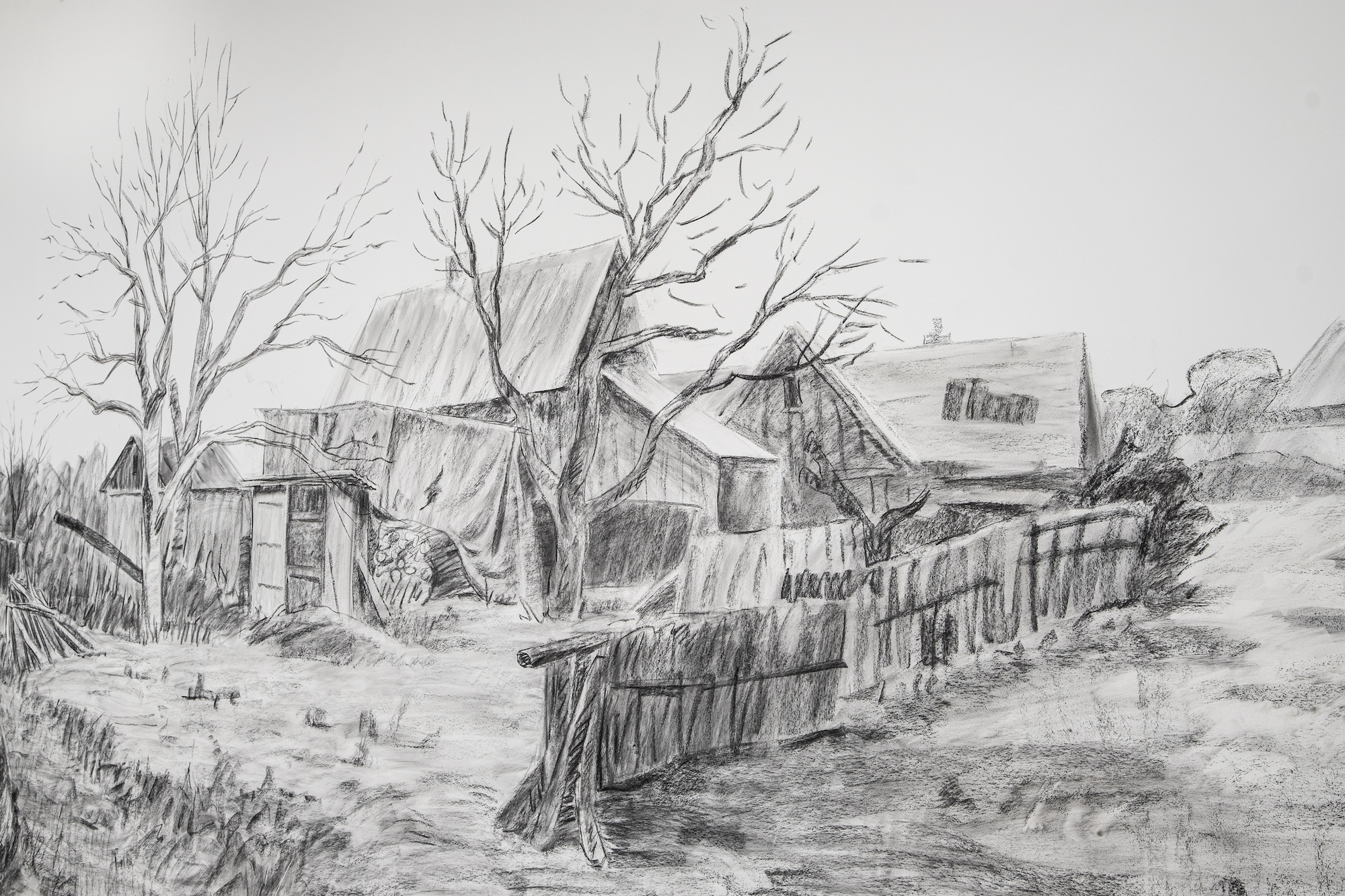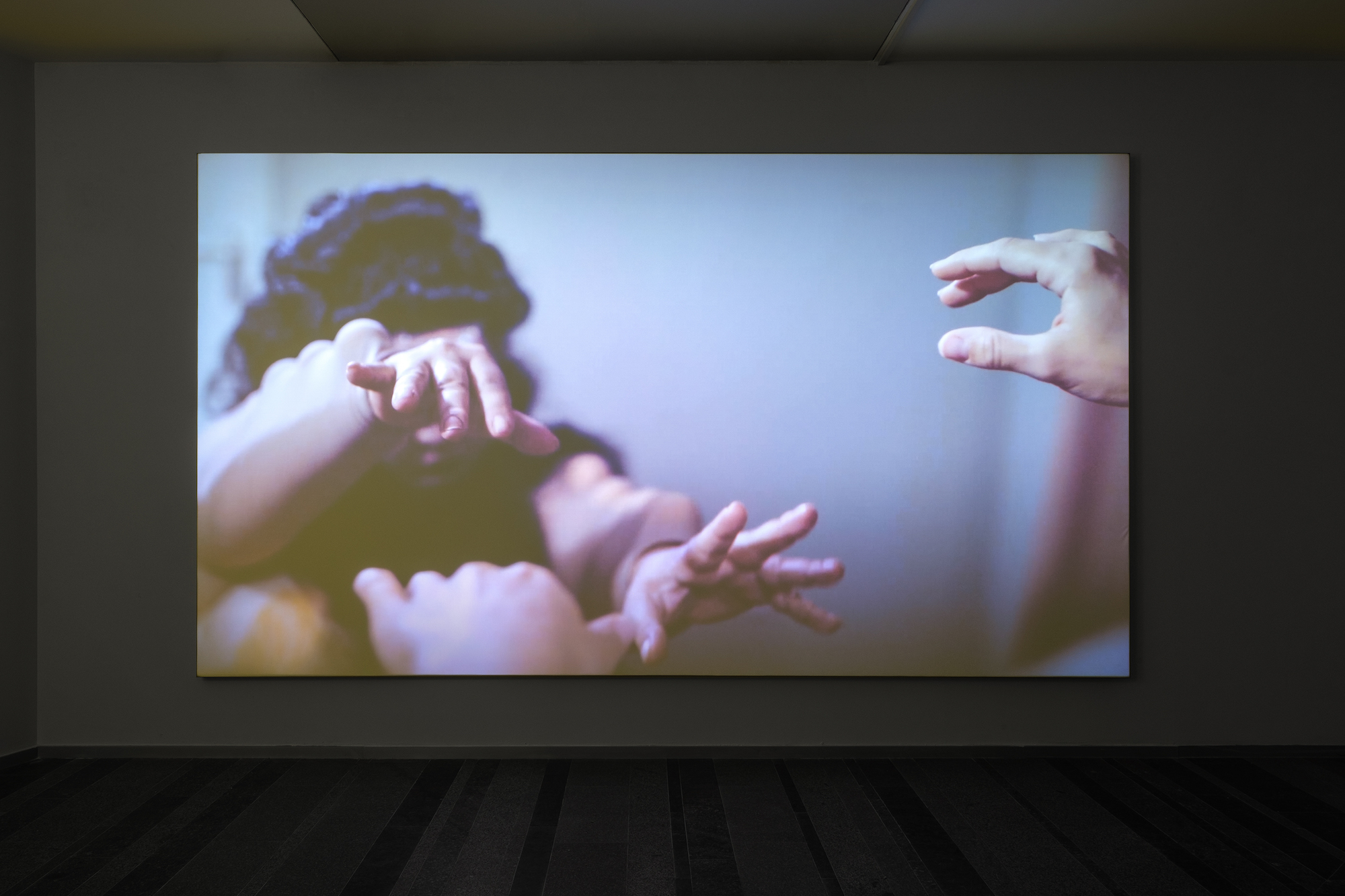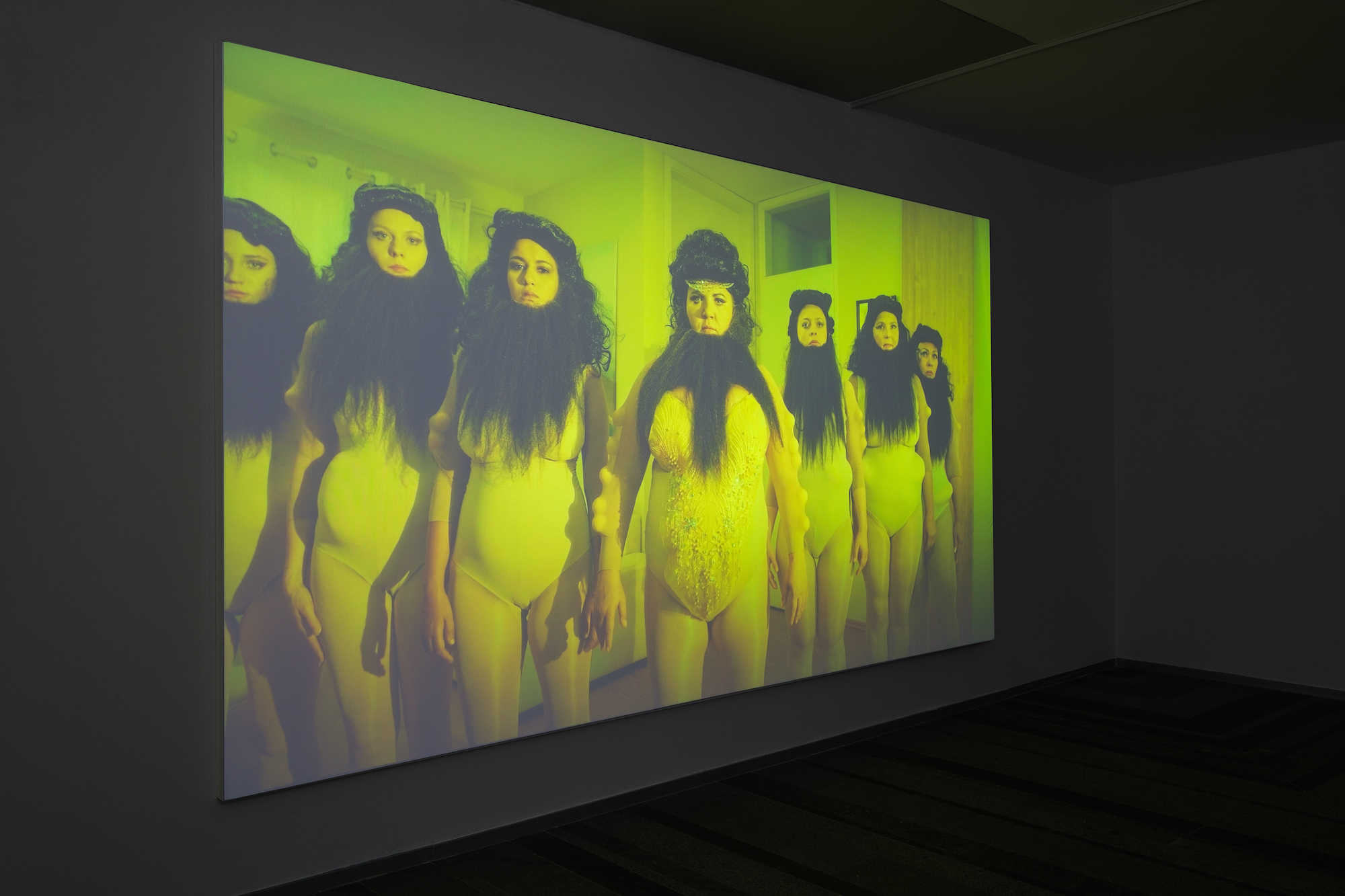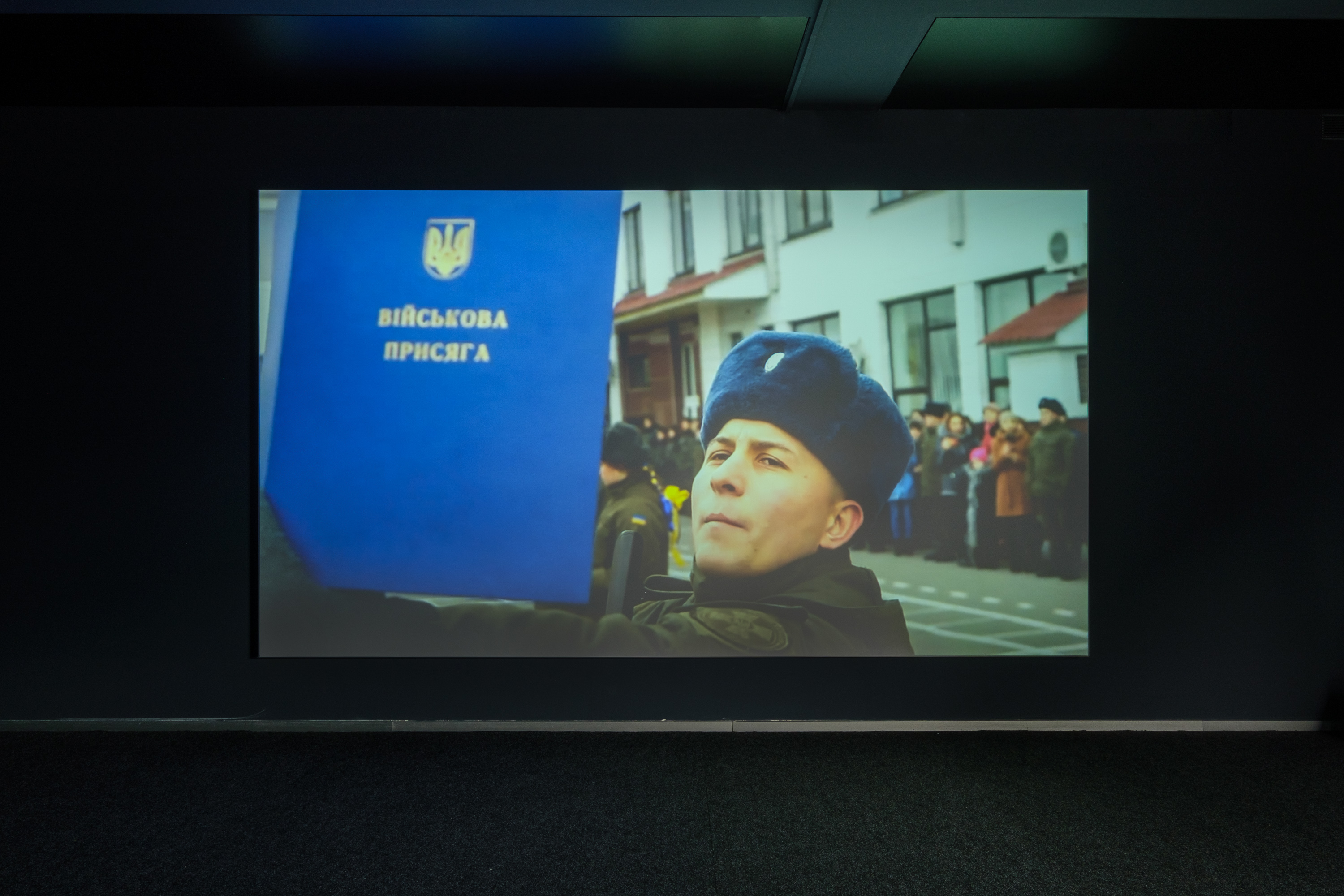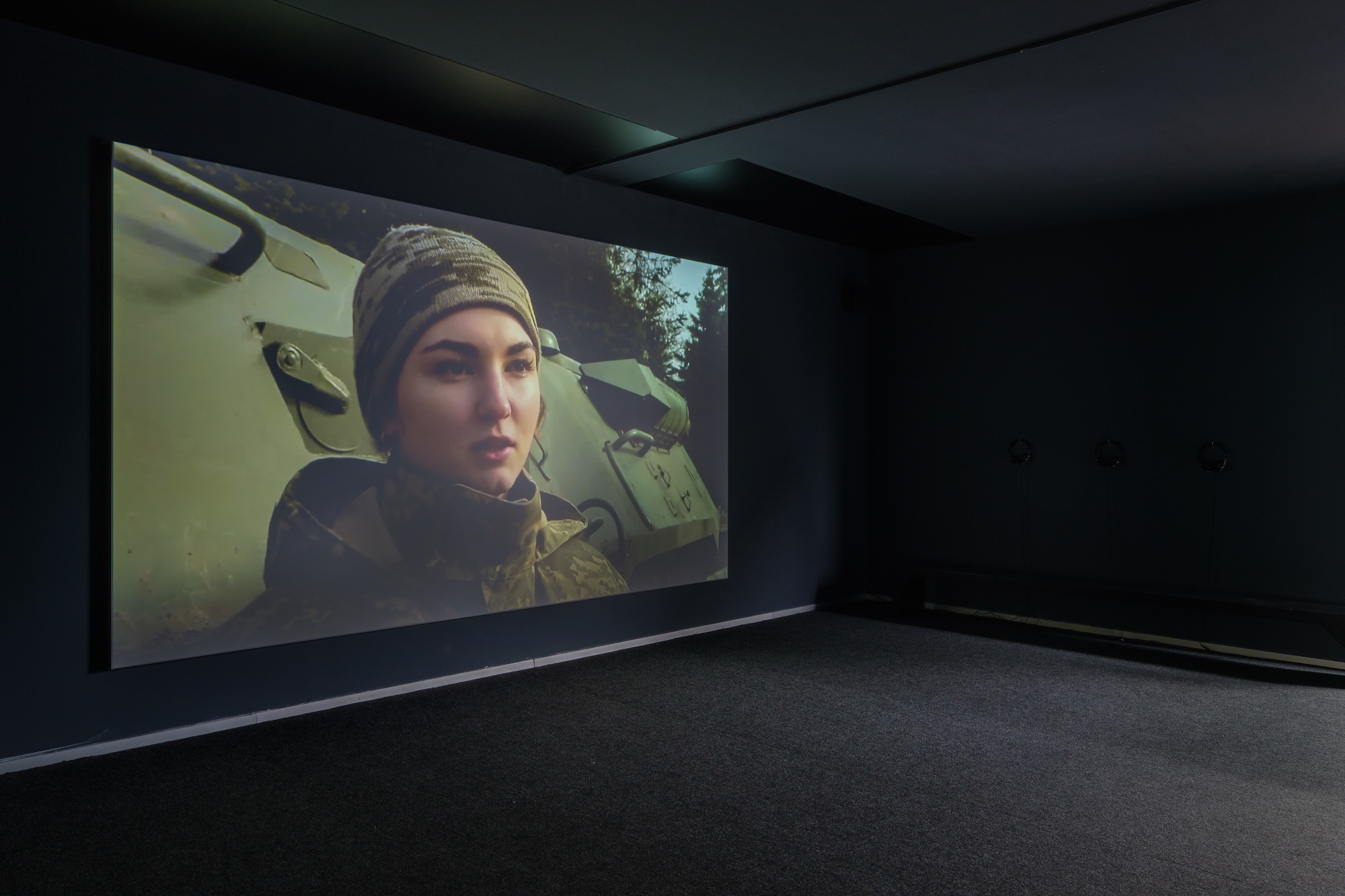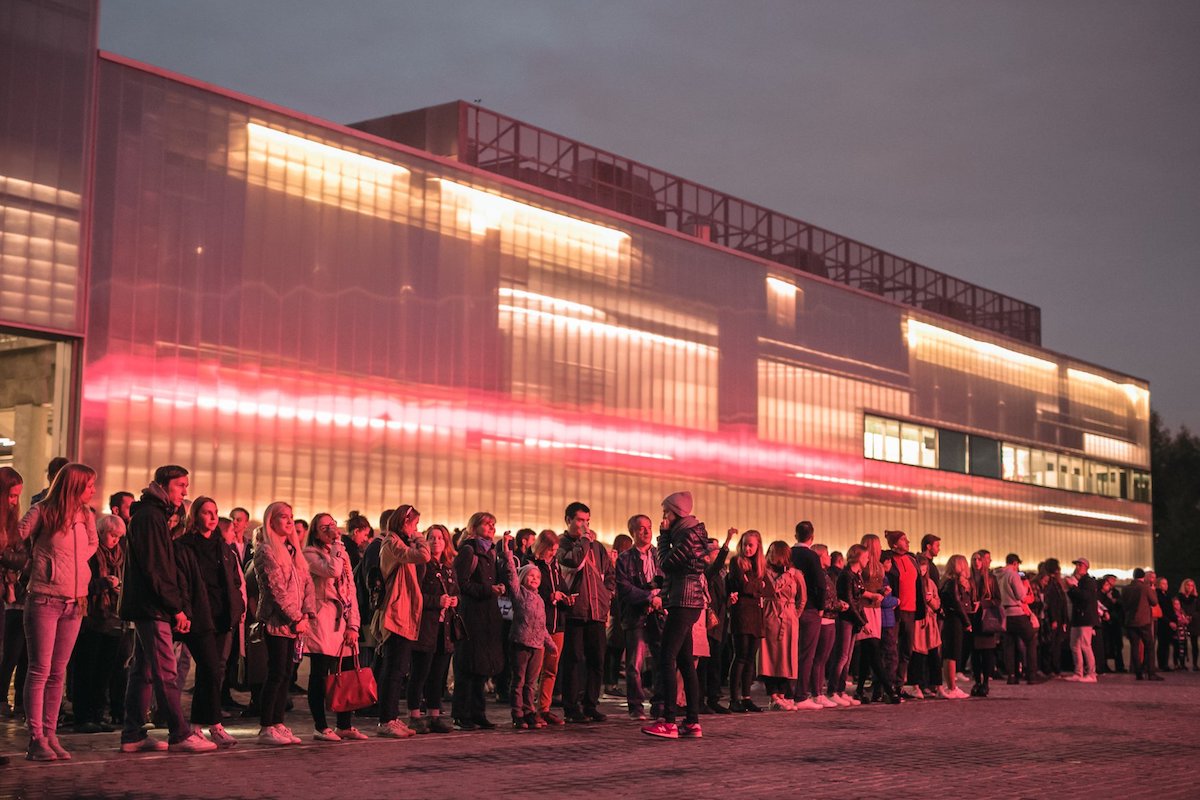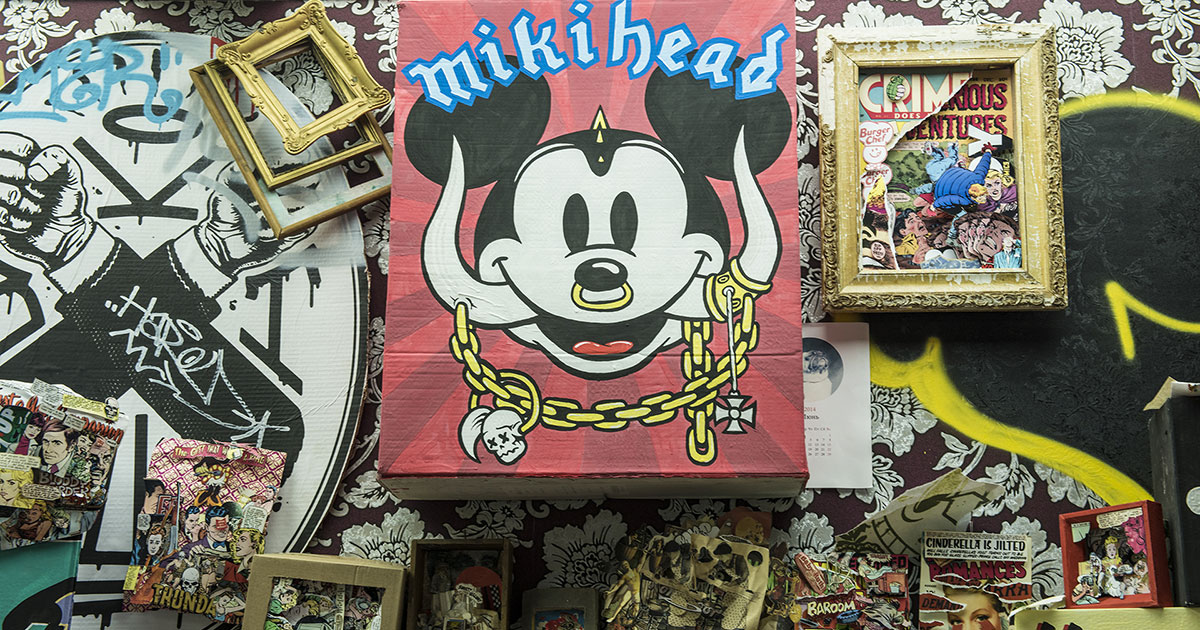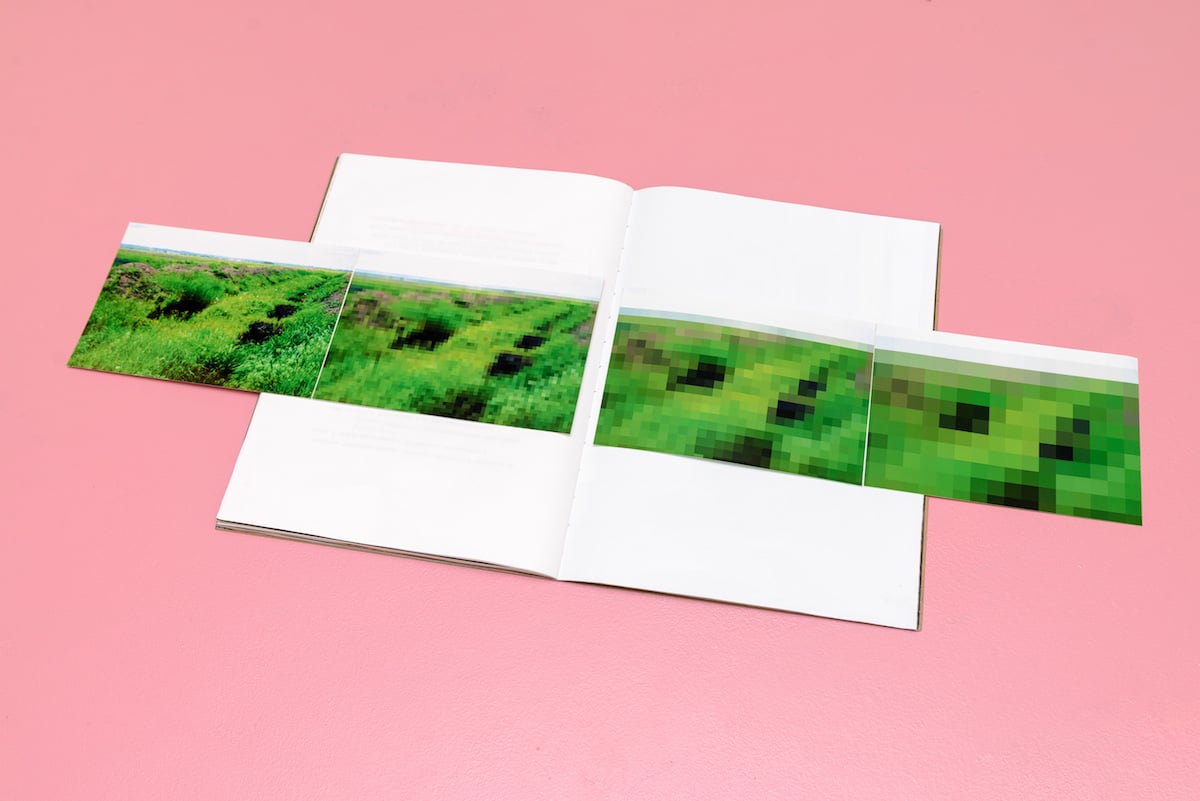Beyond borders: how today’s Ukrainian artists are setting their sights on the world
Over a decade ago, the Ukrainian artists shortlisted for the PinchukArtCentre prize wanted to draw from the nation in flux that surrounded them. Now, a new generation has taken their place, determined to look to the wider world — and the world within themselves.
Behind a thick noir drape hanging across the doorway, a semi-circle of television screens gives the dark room an eerie glow. On the monitors, low-fi videos of naked bodies, contorted or coerced into postures of sexual submission, crack with static. It is uncomfortable viewing made only more menacing by the centrepiece of the installation: an upward-turned knife glinting under a spotlight. “I was photographed putting this knife into my vagina, though it didn’t cut me,” the artist, AntiGonna, tells me. “As a victim of rape myself, it was a comment on what I could do to best protect myself from sexual violence.”
“Endless Story of Disease. Kyiv Porn Horrors, part 1” is a grisly work on the taboo and reality of gender-based violence. AntiGonna, a 32-year-old artist from Kyiv, is one of 20 young Ukrainian artists shortlisted for the biannual PinchukArtCentre prize, now in its sixth iteration, which opened at oligarch Victor Pinchuk’s eponymous art foundation last week. The selected artists hail from towns and cities across Ukraine, and together present a vision of the ideas and issues that inspired their work.
Walking across the four floors of the show, you’d be forgiven for thinking you’d wandered into an exhibition in London or Berlin: video installations contemplating climate change, gender identity, and the stultifying effects of toxic masculinity are ubiquitous. The works here are a living, evolving testament to the effect globalisation has had on the arts.
Ukraine has never had a national centre for contemporary art, and the result has been a diffuse and multifarious artistic culture spread out over urban centres across the country. It means that small, local communities have been able to build their own artistic preferences independent of any dominant national style: cities like Kharkiv, with its School of Photography spearheaded by the artistic genius Boris Mikhailov, and Odesa, with its strong nurturing of conceptual art in the 1970s and 80s, have forged what has since become some of the region’s most distinctive art traditions.
This is perhaps why, at least in part, the Ukrainian art on show at the PinchukArtCentre this year seems to be full of work that’s strong in form, but also more amenable to a tide of global thought.
Yet there is also a schism between generations. Having done much of their growing up online, these young artists are less tethered to their national setting and context than their artistic forebears. In their work, they emerge cognisant of the same issues of identity and self-definition that occupy emerging artists working across the world, with remarkably few markers tying this work to a specifically Ukrainian context.
Walking across the four floors of the show, you’d be forgiven for thinking you’d wandered into an exhibition space in London or Berlin
The aural is invoked with intriguing and powerful force. In Timothy Maxymenko’s “High Voltage”, sounds from the beating mechanical organs that make up the city itself – fuse boxes, ventilation fans, sewage pipes – are recorded and mixed into beats by four Ukrainian electronic musicians. Played through headphones wrapped in their own cables and suspended in clumped groups close to the ceiling, the sound is one of endless brown noise, a barely discernible haze of minimal techno showering from above. It’s an enlivening of the city that’s as participatory as it is fun, and was inspired not by Maxymenko’s native Kyiv, but Barcelona.
“Walking through Barcelona, the sounds of the city moved with me,” he said. “It’s nice to do some work in Kyiv at the moment because I was born here. But I’m an international artist; I mostly work with sounds and cities, which takes me everywhere.”
Like many of his peers at this exhibition, the expression of national identity in Maxymenko’s artworks is secondary to a more fundamental participation in a global outlook. It marks a significant departure from the finalists who graced the same art prize a decade ago, including artists such as Volodymyr Kuznetsov, whose 2009-2011 works on Ukrainian political upheaval relied heavily on the unmistakable angular, crosshatched designs of traditional Ukrainian embroidery.
Today, tradition has been superseded. In Uli Golub’s video project “Look, She’s Got a Beard!”, a group of women wearing comically fake beards are introduced to the world as aliens, riding around a city in a car after encountering a perplexed married couple. The women face resistance, shock, and hostility from the “real world” couple, but with time, their otherness recedes, and after a hypnotic ritual dance with the hostess, assimilation and mutual respect come surely into view. It doesn’t require a wall text reading to perceive the artist’s message, that the antidote to xenophobia is engagement. It’s a hopeful, at times amusing installation, although subtlety is in short supply.
Cultural markers that were unique to a generation used to be more prevalent. The 2011 work of Alina Kleitman took aim at sexual violence enacted on women, much like AntiGonna’s 2020 installation. Yet Kleitman used visual cues – recognisable Ukrainian food packets with their contents smeared carelessly over women’s bodies – to specifically place the art within a Ukrainian context.
“This year we’re dealing with the vision of the post-Maidan generation, which is very different from those who came of age in the 90s – the post-Soviet generation,” says the show’s curator, Alexandra Tryanova. “These were people who were teenagers in the years between the Orange Revolution in 2004 and the Maidan revolution 10 years later. It was a difficult time to be that age. The result is a less documentary, more sensitive approach to art. It’s introspective work rather than reflective of the artists’ local context.”
The show wasn’t entirely without Ukrainian references. In Pavlo Grazhdanskij’s work “Ponivecheno”, the artist splices together real military footage from the war in Donbas, which continues to pit Ukrainian soldiers against Russia-backed forces. The material jarringly puts frames of children learning to bandage teddy bears next to burials of soldiers killed in action. The clips are too short to discern a cinematic narrative, which only heightens its evocative, impressionistic quality. It becomes less a documentary about the events that have engulfed eastern Ukraine since the start of the war in 2014, but rather a decontextualised space exploring the militarisation of societies.
Others take the same global ideas preoccupying other artists and place them into a poignant local context. Many are rewarded for their efforts. “Value” by artist Anton Karyuk is the most minimalist of all the artworks, a single metro token placed under a spotlight, protected from visitors by a square perspex box. It is a meditation on the idea of safety for LGBTQ people; specifically when the community is forced to leave pride events for fear of attacks. The presence of a metro coin in your pocket — the ability to jump on a subway car and away from those who wish you harm — could be the difference between a successful escape and a violent encounter. The coin, then, becomes a symbol of freedom, but also remains a physical remnant of an outdated transport system — and society — not yet caught up to a digital age. It is gentler symbolism than found in some of the other artworks in the exhibition, and leaves you wondering what we will eventually see in its place.
